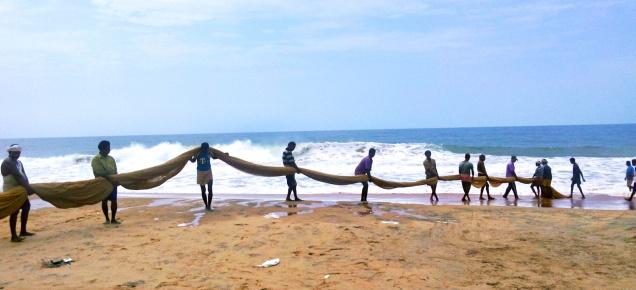Porter Ranch and the History of the Future
By Susanna Hecht, FCL of Global Environment and Resources, Professor of Urban Planning
February’s average temp in LA was 77 degrees and virtually during the whole month there were high surf advisories. Additionally, we all shifted from boots to sandals and T shirts and went about the business of the day, more or less oblivious (as usual) to the big deal ahead.
The oceans are rising at the fastest rate in 28 centuries, which is a big chunk of the history of human civilization. Although Florida’s Senator (and former presidential candidate) Marco Rubio is a climate change denier, his state, which barely pokes above sea level and sits on soggy limestone substrates that suck up seawater like kitchen sponges, is already seeing these effects, as streets remain flooded and fancy landscaping dies. This is happening— not because of some scary storm surge associated with a big weather event like a hurricane— but because of the “king” tides and higher sea levels.
The high tide advisories we’ve been hearing in LA may be good news to surfers, but it’s getting more and more problematic. Just as a comparison, measurements taken in Maryland in the decade from 1955-1965 showed 32 days of flooding. In the decade since 2004- 2014, that number leaped up to 394 days. Everyone might pay attention to reports in the Proceedings of the National Academies of Sciences (PNAS), or Nature Climate Change, that are publishing major studies on the impacts of rising seas—-not in 2050 or something, but right now. Storm drains are clogging, causeways are routinely flooded, well water supplies in coastal regions are becoming contaminated with salt water (and this has a lot of implications for coastal plain agriculture —think places like Oxnard), residential and resources development, and salt water intrusion into water tables more generally.
Most of the flood days that now occur on the East coast would not be occurring without global warming, and this dynamic– though measured more assiduously in the US— is surely occurring all over the planet in its most populous venues, coastal cities, where seas levels are predicted to rise of more than 3 feet by 2100. We tend to think of coastal development as mainly Luxury Real Estate, and may enjoy a good gloat thinking about Intel’s Larry Ellison losing a bundle on his extensive Malibu ocean front properties, but much of the world coastal areas are homes to poor households who earn their livings from seas and mangrove forests, both now threatened by the rising tides and ocean changes associated with planetary warming. These are “Slo Mo” events— gradually accumulating in ways that we don’t see, marginalizing in a piecemeal way.
You will be amazed to hear that this dynamic will be attended by greater levels of inequality. The ability to buffer and adapt to climate events from relentless king tides to hurricanes is much more elaborated within the developed world, and the rich within them, more able still. The impact of Hurricane Katrina on New Orleans’ low income populations has been very well documented and many affected truly lost everything. While not the first US socio-climate migrants (the “Exodusters” of the 1930s dust bowl have that fame) the loss of assets, houses, jobs and social connections has meant that up to a third of the population in the poorer parishes never returned.
The consequences of Hurricane Mitch in Central America ruined infrastructure, assets and livelihoods of the poor so profoundly that it has yet to really recover and triggered an even more severe diaspora from the one already in the making due to the existing levels of inequality. This is expressed most poignantly in the image of Honduran children running toward INS officials at the US border. The impact of more intense hurricanes and intense storms is estimated to suck up about 30% of the Central American GDP over the next 50 years, exacerbating already distressing levels of inequality. There are really no numbers at all about the “everyday” displacements, but the “subsidy from nature” tied to the seas, mangroves, estuaries: among the most productive sites on the planet, are going under.
So what about Paris? 195 countries signing up, etc.? It is, as they say, a start, but it’s important to remember that there is “committed carbon”, that is, C emitted in the last 150 years that will take centuries to remove (see my last blog for more on this). In the last blog, I mentioned a list of short lived greenhouse gas pollutants like methane and “Black carbon”. Controlling these or offsetting in the tropical world could have a real effect. Except….
Photo credit: S.R. Praveen at http://www.thehindu.com/news/cities/Thiruvananthapuram/hopes-of-good-life-drowned-by-a-surging-sea/article8208570.ece




